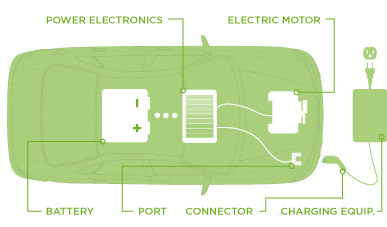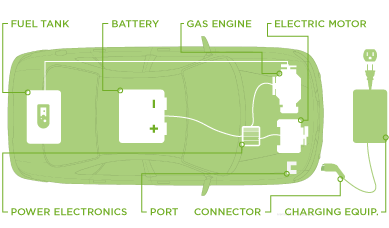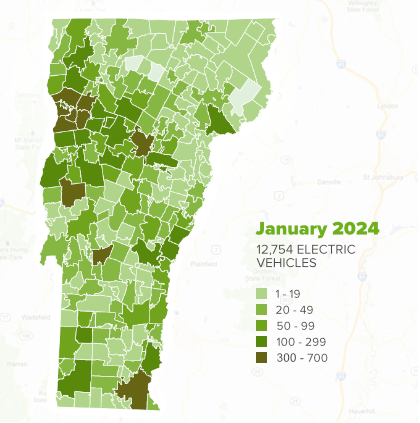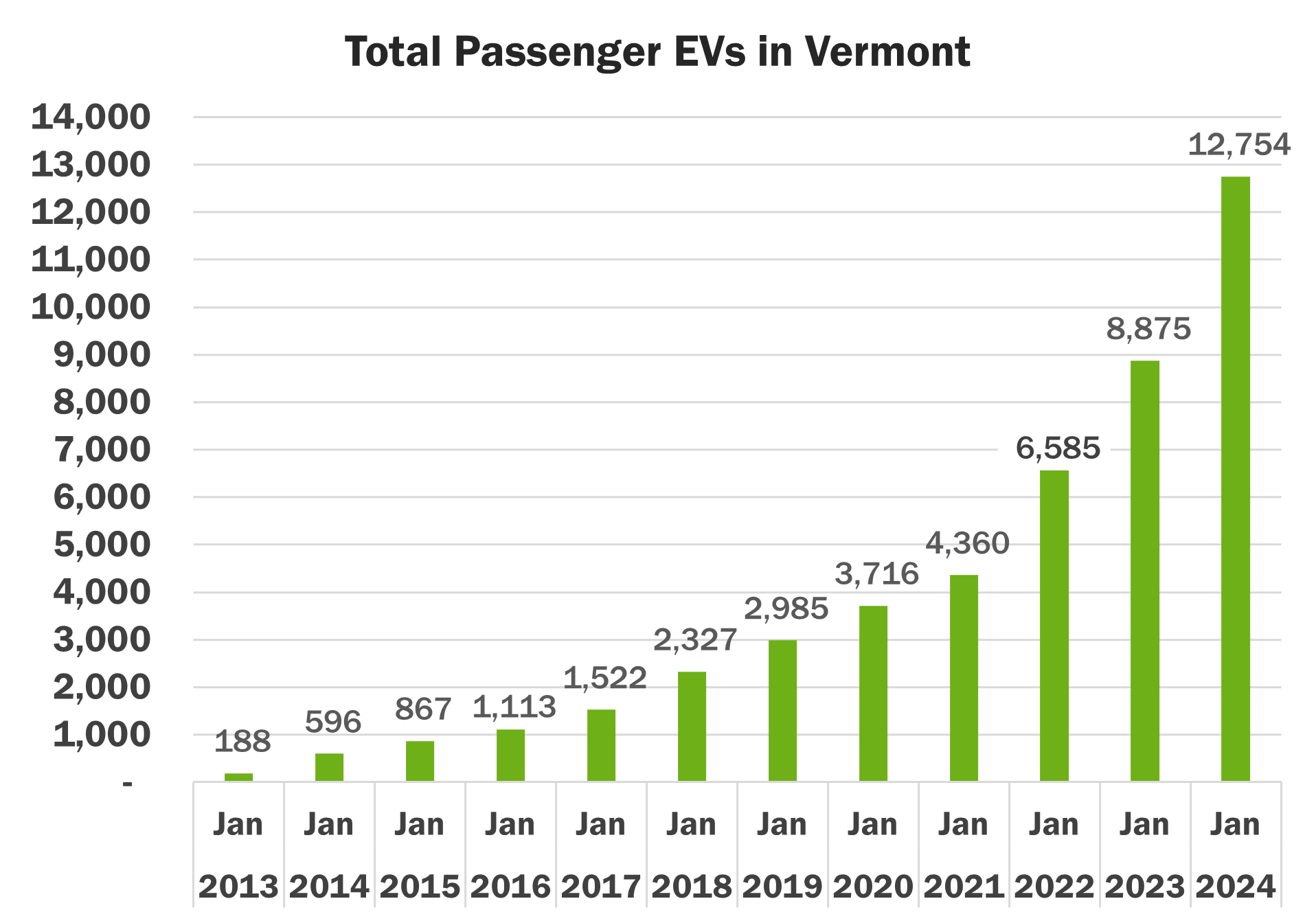Intro to Electric Vehicles
Plug-in electric vehicles (EVs) are fast, fun, and efficient. Maintenance is simpler and cheaper. Re-"fueling" is as simple as plugging into an electrical outlet, and you'll spend the equivalent of about a $1.50 per gallon of gas to do so. EVs increase our energy independence and contribute to healthier air and lower carbon emissions. And purchase incentives are available to help reduce the cost of your EV purchase—so the time to take advantage is now!
Types of EVs
Plug in electric vehicles (EVs) come in a variety of shapes and sizes. There are a variety of super-efficient options powered by electricity, like electric-assist bicycles, neighborhood electric vehicles, and motorcycles. For the passenger cars and trucks used by most Vermonters there are two basic EV designs:

All Electric Vehicles (AEVs)
Powered solely by electric energy stored in the battery
The Chevrolet Bolt, Nissan Leaf, Tesla Model Y, Volkswagen ID.4, and Ford Mustang Mach-E are examples of all-electric vehicles in Vermont.
Is it for me?
Good option for two-car households, those with shorter commutes, and EV lovers with a pioneering spirit. Range on the coldest Vermont days will be much less than the official manufacturer ratings. For example, an AEV with 250 miles of official range might be closer to 125 miles in frigid conditions, so this should be factored into vehicle purchase considerations. Many all-electric models now offer over 200 miles of range, making it easier than ever to make the switch.

Plug-In Hybrid Electric Vehicles (PHEVs)
Powered by a combination of battery power and gasoline engine
The Toyota RAV4 Prime, Jeep Wrangler 4xe, Mitsubishi Outlander PHEV and Hyundai Tucson PHEV are examples of PHEVs. Generally they do not travel as far as all-electric vehicles on battery power, but when the battery runs low, the gasoline engine turns on to extend their range.
Is it for me?
Convenient option for longer commutes, road trippers, and people who need more range flexibility.

They are plugging in all over the state
As of January 2024 there were 12,754 EVs in the Vermont Department of Motor Vehicles registration database. This is a 44% increase over the past year. Electric cars are also spreading across the state, and are now in 98% of Vermont communities.
58% of EVs are all-electric models powered solely by the battery. The remaining are plug-in hybrid electric vehicles (PHEVs) which can run on both electricity and gasoline, providing greater range confidence among drivers with the flexibility to run on gasoline when needed.
Interested?
See the latest updates on EVs registered in the state of Vermont:

Current Electric Car Ownership Snapshot
Vermont has experienced substantial growth of electric vehicles registrations over the past year. As of January 2024:
- EVs are registered in 98% of Vermont communities.
- The number of EVs increased by 3,879 vehicles or 44% over the past year.
- Plug-in vehicles comprised 10% of new light duty vehicle sales.
- About 12% of EVs newly registered in 2023 were pre-owned vehicles.
- There are over 100 unique models of plug-in cars registered in the state. The Chevrolet Bolt was the most popular all-electric model with 1,163 total registrations. Top sellers in the last quarter included the Chevrolet Bolt EV/EUV (218 added registrations), Toyota RAV4 Prime (186), Tesla Model Y (164), Volkswagen ID.4 (161), the Jeep Wrangler 4xe (158), and the Nissan LEAF (116).
- Chittenden County has the most EVs registered (4,496) and highest rate of EV ownership with about 1 EV for every 37 people.
- There are now 374 public charging locations for electric vehicles across the state.
- Vermont has 55 public DC Fast Chargers available for EVs equipped with this technology to quickly recharge in about 30-60 minutes for longer trips.
Electric Vehicles Outperform Gas-Powered Cars
Electric Vehicles (EVs) often come with features typically seen in luxury vehicles such as navigation, Bluetooth, heated seats, heated steering wheels—even solar panels. In addition to finding everything inside your EV that you would in most other vehicles, EVs also provide tremendous traction due to the distributed weight of their batteries. Some EV owners report that they are better in the Vermont snow than any AWD vehicle they have owned.
The Key Difference
Internal combustion engine (ICE) vehicles burn fuel to generate the heat that creates propulsion, whereas electric car motors generate torque from the start.
There is no delay when you press the accelerator on an electric car, unlike when you touch the pedal on a gasoline powered vehicle. The Formula E racing series demonstrates how vehicles powered by electricity are competing at the top levels of racing. And in this video two Lotus sports cars, one powered by electricity and the other by gasoline compete. (It isn't even close!)